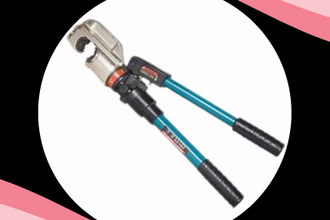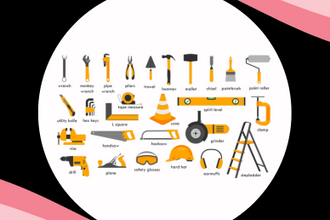Did you know that early forms of sandpaper have been around for over 800 years?

Today, it’s a must-have tool for woodworkers, painters, and DIY fans. Sandpaper plays a key role in getting smooth, clean finishes on almost any surface. Using the proper grit and material, sandpaper can strip paint, even out wood surfaces, or prepare metal for polishing. It sounds simple, but there’s a lot to learn!
What is sandpaper
Sandpaper is a coarse sheet used to smooth out rough surfaces. It’s made by attaching tiny grains (like sand) to paper or cloth. When you rub it on a surface, those grains scrape away rough spots. That’s how it shapes wood, removes old paint, or cleans up metal. People use it before painting or finishing so the surface looks clean and even. It may seem simple, but sandpaper is one of the most useful tools in any DIY or repair project.
Material of Sandpaper
Sandpaper isn’t all the same—it’s made from different materials, and each one works best for certain jobs.
-
Aluminum oxide is strong and long-lasting. It’s perfect for sanding wood and metal.
-
Garnet is softer and wears out more quickly, but it also gives wood a smooth, clean finish.
-
Silicon carbide is extremely sharp and works well on metal, plastic, and even glass.
-
Ceramic grit is extremely durable and ideal for heavy-duty sanding on rough materials.
Knowing what each material does makes it easier to pick the right sandpaper. It saves you time and helps your project turn out better.
Common types of sandpaper
There are several types of sandpaper, based on their roughness or smoothness. This is called the grit number. A lower grit means rougher sandpaper. A higher grit means it’s smoother. Selecting the proper grit depends on the surface you need to sand.
Here’s a simple guide:
-
Coarse (40–60 grit) – rough and ideal for stripping paint or shaping wood.
-
Medium (80–120 grit) – works well for everyday sanding and smoothing surfaces.
-
Fine (150–180 grit) – Perfect for smooth sanding and prepping surfaces for painting.
-
Very Fine (220–240 grit) – Used between paint coats or for a super-smooth surface.
-
Ultra-Fine (320 and above) – Best for polishing or finishing delicate surfaces.
Think of it this way: Coarse = rougher, Fine = smoother. Picking the right type helps you avoid damage and get a better finish. It also makes your work easier and faster.
Uses of sandpaper
Sandpaper isn’t just for wood—it works on many surfaces. Here’s where it helps:
-
Woodworking – Smooths rough wood before painting or staining.
-
Metal Polishing – Removes rust or makes metal shine.
-
Paint Removal – Takes off old paint from wood, metal, or walls.
-
Auto Bodywork – Prepares car surfaces for paint or repairs.
-
Craft Projects – Gives a neat finish to handmade items.
Quick tip: Always sand in the same direction as the wood grain to avoid scratches.
How to use sandpaper
Want better sanding results? Just follow these easy steps:
-
Choose the right grit – Coarse sandpaper handles rough work, while fine grit gives a smooth finish.
-
Prep the surface – Ensure the surface is clean and dry.
-
Sand evenly – Apply light, steady pressure. Let the sandpaper do the work.
-
Follow the grain – On wood, sand in the same direction as the grain.
-
Clean up – Wipe away any dust after you're done.
Following these steps makes it easier to achieve a smooth, clean finish.
Conclusion
In this article, we’ve covered sandpaper in detail. You’ve seen how grit, numbers, materials, and proper technique all come together to help you finish surfaces the right way. My best tip? Always test on a small area first—it allows you to choose the best grit without damaging your project. Now that you know how to pick and use the right sandpaper, give your next project a clean, smooth start!
FAQs
Can sandpaper scratch a diamond?
No, sandpaper cannot scratch a diamond. Diamonds are hard, and typical sandpaper materials don’t have the strength to damage them.
Which sandpaper should I use to remove rust from metal surfaces?
For removing rust, use medium to coarse sandpaper (around 60 to 100 grit) made of aluminum oxide or silicon carbide. These types work well for cleaning metal surfaces. Begin with a rougher grit and switch to finer grits for a smooth finish.
How do I pick the right sandpaper grit for sanding wood?
Use coarse grit (80 to 100) for rough sanding or paint removal, medium grit (120 to 150) for smoothing, and fine grit (180 to 220) for prepping wood before painting or staining.
Is fine-grit sandpaper suitable for finishing furniture?
Yes, fine grit (between 180 and 240) is perfect for furniture finishing. It gently smooths surfaces without causing damage, making it ready for paint or stain.







